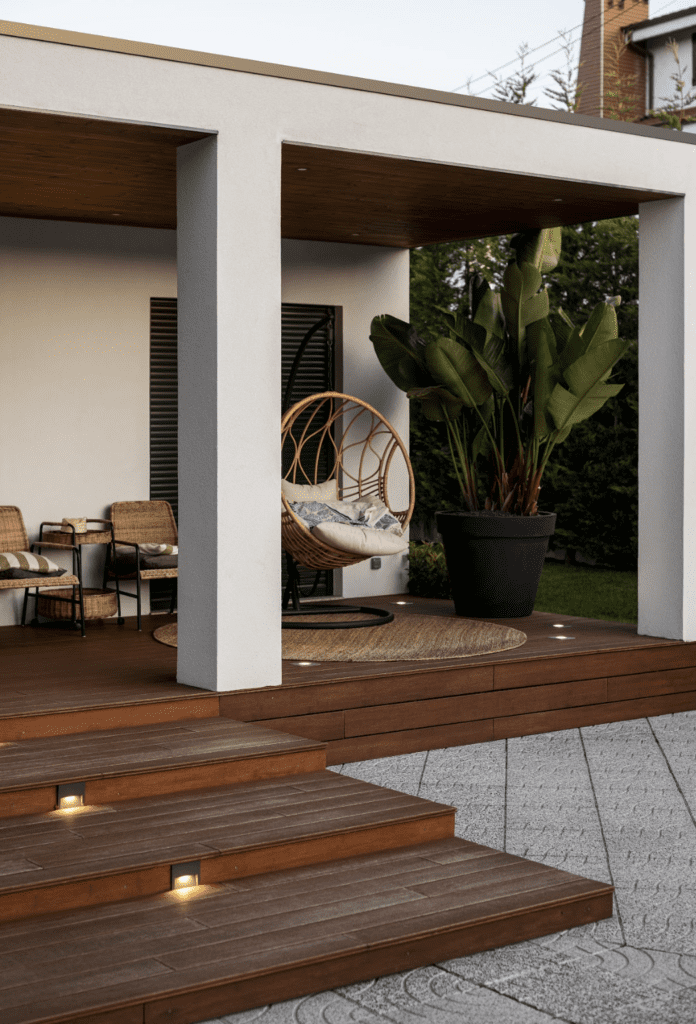HOME + Plantation Bamboo
In China, over six million hectares of bamboo are grown each year, providing the raw material for some of the world’s most sustainable and eco-friendly timber, which now finds its ideal application as decking.

The variety of giant bamboo called ‘moso’ is one of over a thousand species of bamboo grown across the world. But moso is special, shares Plantation Bamboo’s Steve Roughan, “because it’s panda approved.”
This means that this giant bamboo species isn’t a variety eaten by the majestic, endangered bears, can be sustainably grown in China by farmers, and harvested seasonally, a bit like maize.
“It’s an amazing plant that is actually a grass, and it can grow up to one metre a day – you can almost watch it grow,” shares Steve.
Once it hits full maturity of around 20-30 metres after three to five years, bamboo stems can be harvested annually, but unlike tropical hardwood, which takes many years to mature, nothing is wasted. From the stem to the leaves, every part of the plant is utilised in the production of a vast range of products, including toothbrushes, brooms, clothing, and construction materials.
This makes it one of the most rapidly renewable natural resources available in construction, and it has found its ideal application in outdoor decking, where it stands up to the elements with its incredibly durable and hard-wearing qualities.

In New Zealand, Plantation Bamboo distributes from Dutch supplier, MOSO, two of the most high-performing bamboo decking products available: Bamboo X-treme decking (which undergoes a unique thermal process for added stability and resistance to fungi, reducing the need for frequent maintenance) and Bamboo N-Durance decking, the latest bamboo decking innovation to hit the market.
Bamboo N-Durance offers an alternative aesthetic to the dark brown hues of Bamboo X-treme decking, with it’s soft, caramel colour, creating a warm and luxurious aesthetic. The flat or grooved options on either side of the boards make it suitable for a vast range of applications and gives the decking an opulent appearance.
“We introduced Bamboo N-Durance decking as an alternative to the well-proven Bamboo X-Treme decking to meet the demand for a lighter coloured decking,” shares Steve. “Bamboo N-Durance has a light, caramel colour and requires annual oil maintenance for protection against fungi, whereas the thermal treatment Bamboo X-treme undergoes makes it considerably darker – but this will lighten over time to a natural silver-grey colour.”
Both bamboo decking options are made from moso bamboo and share similar strength and durability, along with a clip/screw and end-matching join system, enabling quick and easy installation, with minimal cutting and wastage. “Builders also love the straightness and consistency of every decking board” said Steve.
Steve has travelled to China multiple times to visit the bamboo factories and production of the eco-friendly decking and is continually impressed by the immense forests of bamboo and the dedication of Chinese farmers.
“It’s awe-inspiring how moso bamboo is cultivated, and equally breathtaking how it can be used to create a product that is as hard-wearing and durable as it is sustainable.”





